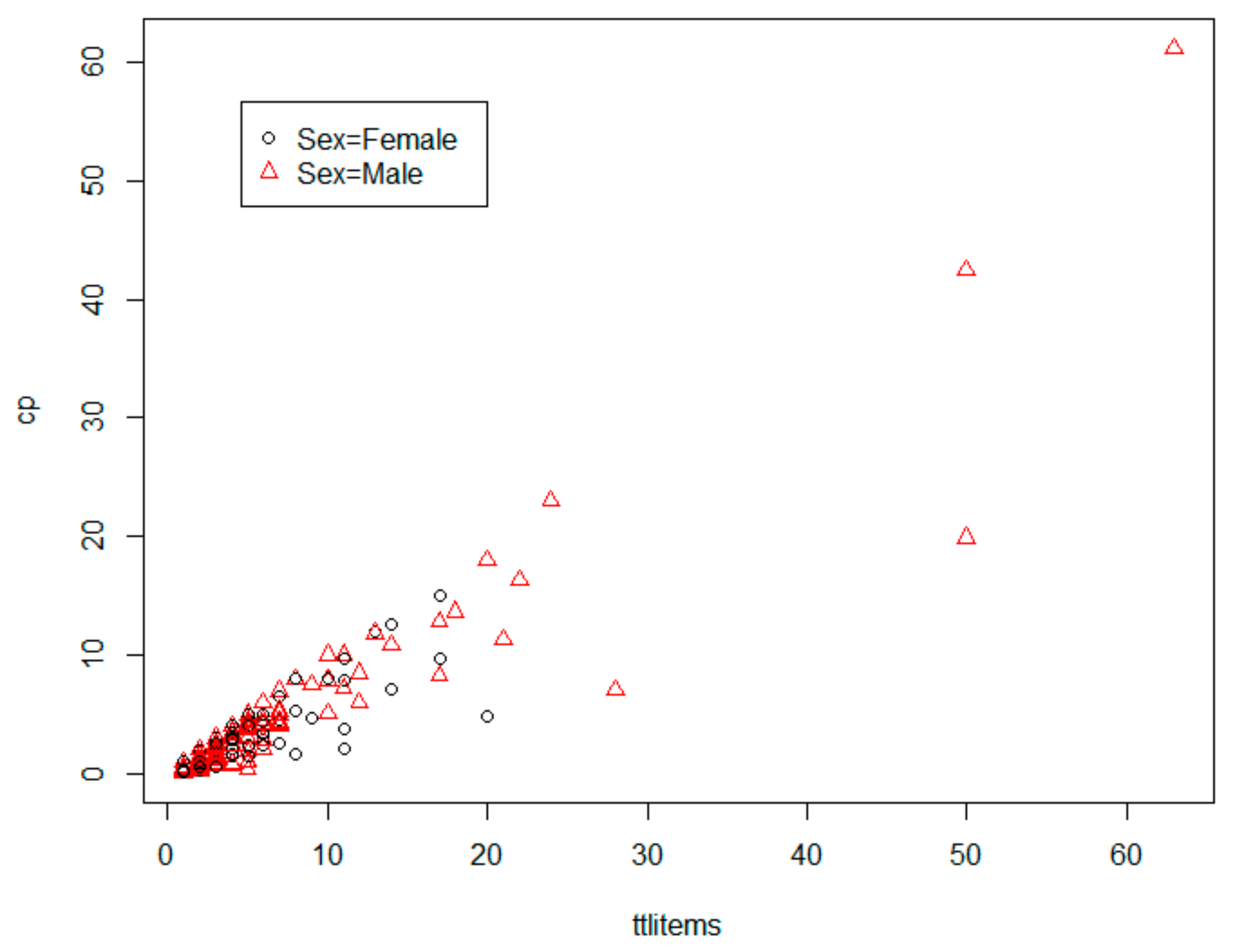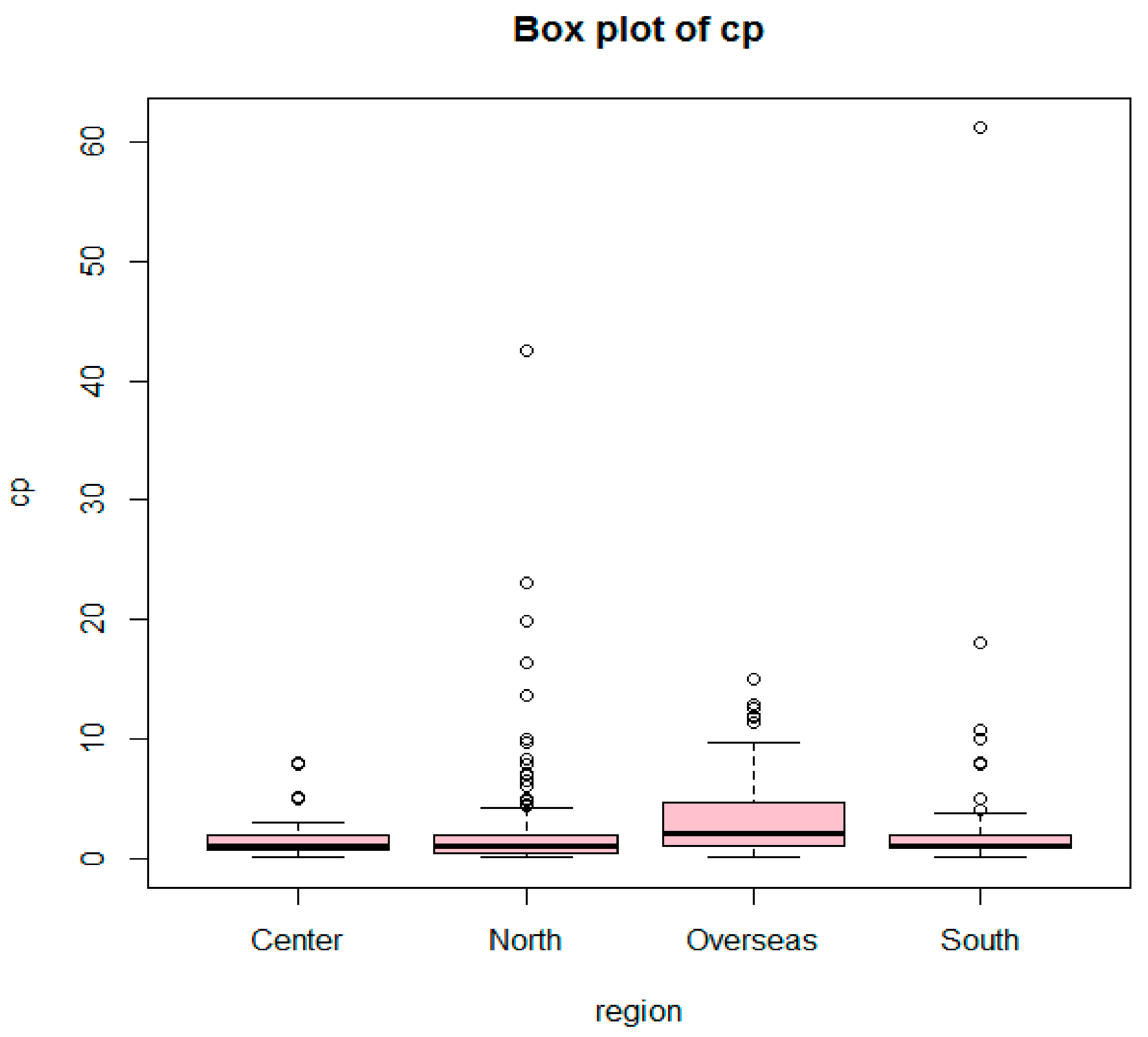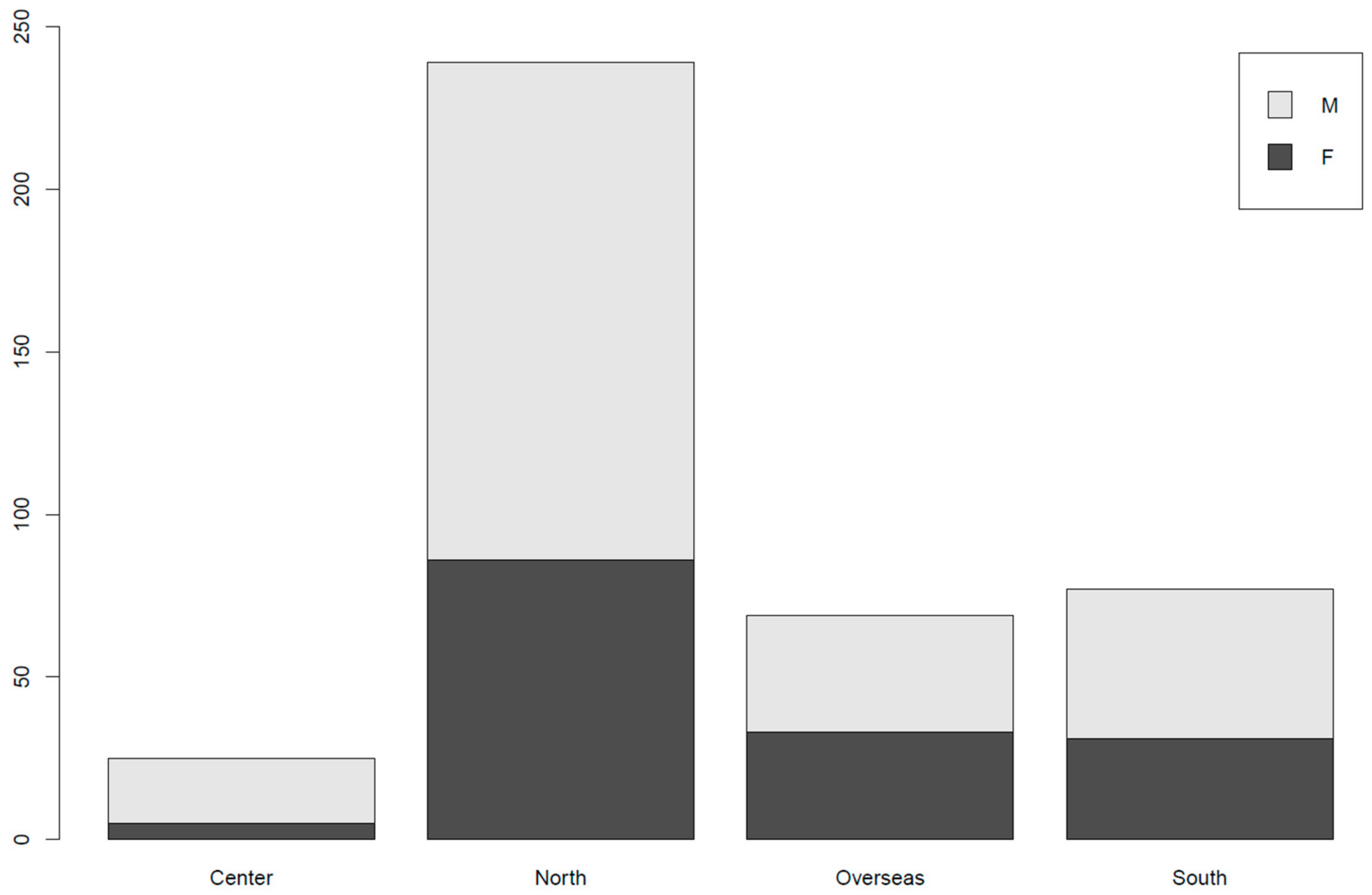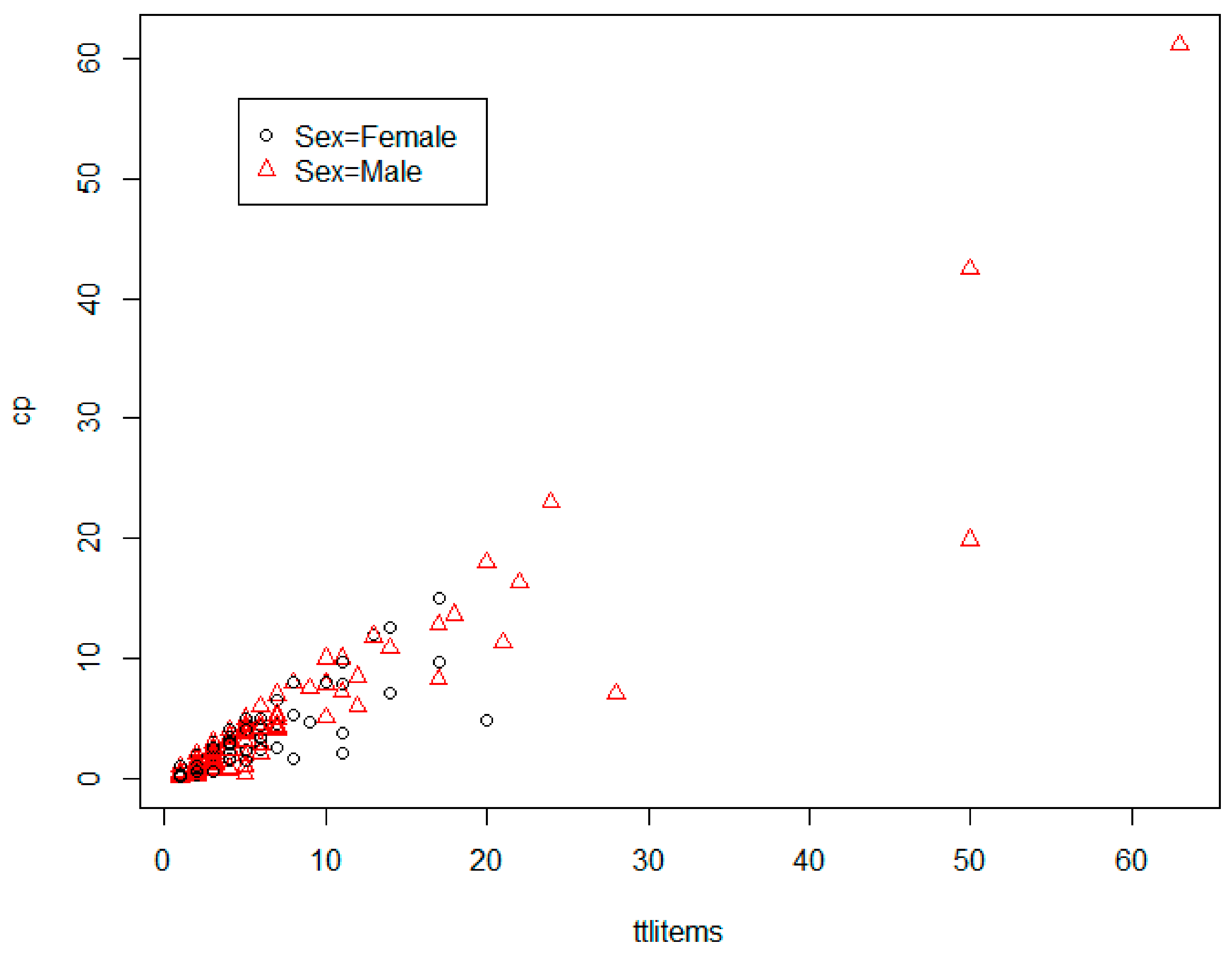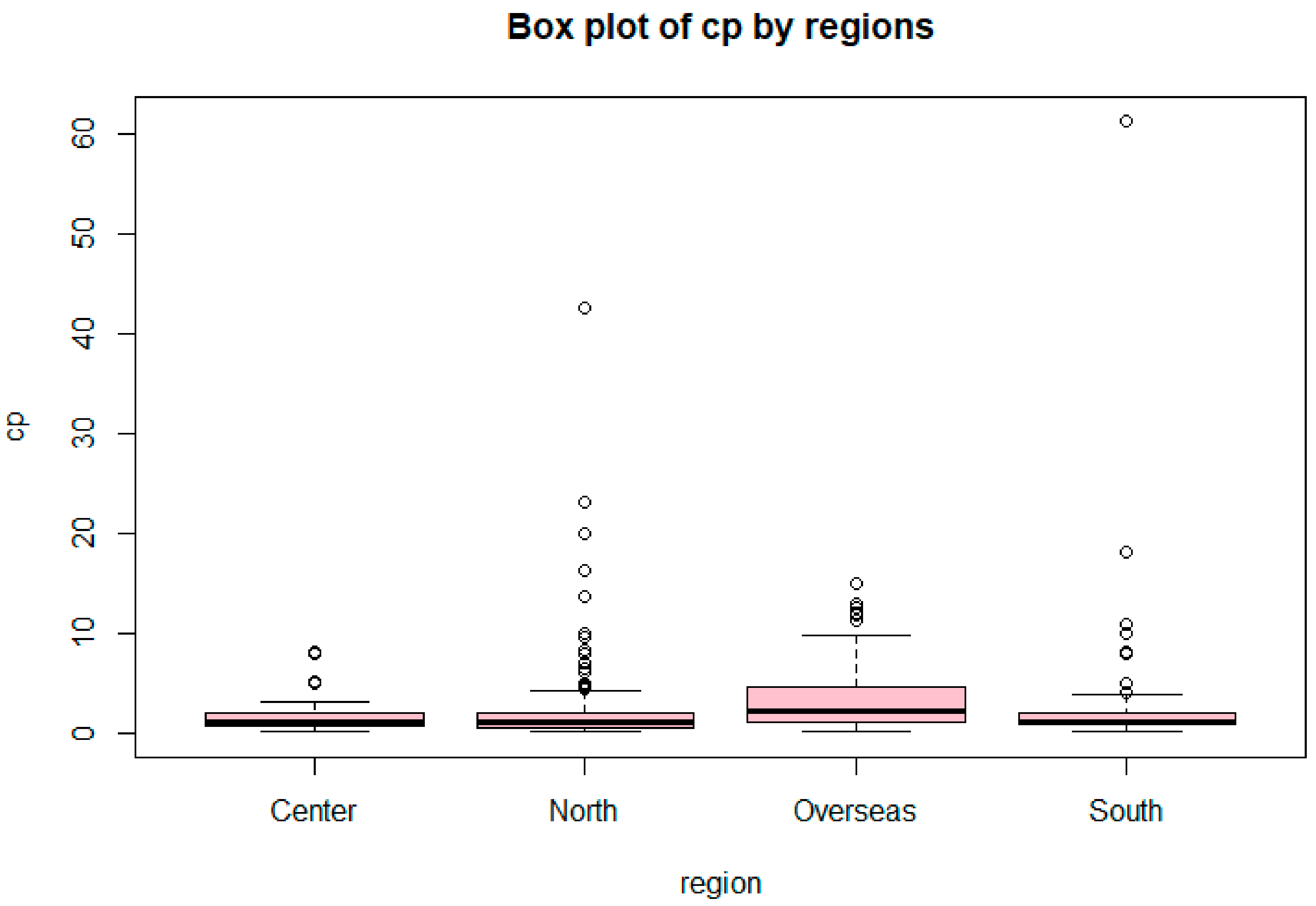4.1. Limitation
Although several insights could be gleaned from analyzing this dataset, the study is not without limitations. Specifically, the dependent variable in this study is open to redefinition. Here, the SDC method is applied to measure the scientific productivity of Vietnamese social science researchers and this relative productivity is the dependent variable. However, SDC is not the only method available. There are different ways to calculate the relative contribution of authors to a research paper, such as the traditional method, the “equal contribution” norm, the “first-last-author-emphasis” norm, or the “percent-contribution-indicated” approach [
36]. Hence, the results obtained in this study are not conclusive. As measuring research productivity is crucial for academic promotions, granting, and award decisions, the results should not yet be used as the basis for making policies in this area. Therefore, the results may be sensitive to the weights assigned to the author sequences, and should only be considered “preliminary”.
These preliminary results, however, do hint at several directions for future research. First, one could test these results by using alternative methods for assigning credit points to authors in a research paper. Given that first author and solo author get equal points in this study, one could reasonably assume the solo author should be awarded more points than the first author of a co-authored paper. Using alternative methods could test the robustness of the dependent variable. Second, one could also take into account the association between foreign co-authorship and the research productivity of Vietnamese scientists. Analyzing how this factor is associated with relative contribution could yield a more multifaceted picture of academic output in Vietnam’s social science disciplines.
4.2. Implications
By analyzing images and statistics, we hoped this article would reach valuable conclusions on the factors affecting scientific output in terms of the relative productivity of Vietnamese authors and the current status of academia in Vietnam.
First, the results obtained from the first regression model indicated that age only had an effect on relative productivity for scientists from 40 to fewer than 50 years old. This was also the largest category, grouping 165 out of 410 scholars (over 40%). Furthermore, the results also showed that authors aged between 40 and 50 had a higher mean relative productivity (3.07, with p = 1.96 × 10−14), the largest average nominal productivity (4.41 articles) and the largest average number of articles with first authorship (2.29 articles). Meanwhile, all other age groups admitted insignificant coefficients, suggesting that first authorship and age had no effect on scientists outside of the 40 to 50 age range. This curious occurrence could be explained by various reasons. It should first be remarked that, as said above, the majority of authors in our sample belonged to this age category; thus, it is possible that the other groups were not large enough to show the impact of these factors. Technical aspects aside, authors in the 40–50 age range were also the most productive, which contrasted with the general inactivity of authors in other age categories. Perhaps the period between 40 and 50 years of age was a sort of “critical period” in the career of a scholar, and it was consequently the only age range in which author productivity could be defined with its base characteristics, including the impact of older age and first authorship.
Secondly, gender and region did not affect scientific output in terms of relative productivity. While the results of previous studies suggested that men were more productive than women in research [
20,
21,
22], our finding showed no difference in CP-based productivity between males and females. As for regions, it seemed that scientists were not affected by differences in culture, infrastructure, and policy that are specific to each region of Vietnam. This could be explained by the fact that scientists today have more access to academic resources which have become more and more readily available on the Internet. The task of researching and reviewing literature has thus become much less demanding. With these results, it could be said that when the contribution to each publication was taken into account, and not merely the count of articles, the scientific output of authors in the social sciences in Vietnam did not depend on objective factors such as gender and geographical affiliation [
39]. The main determinant of scientific output was thus the aptitude of the researcher, but also the motivation to do scientific research, especially in the case of the social sciences, which were still more or less underappreciated in Vietnam. In this respect, university administrations could play a role in supporting Vietnamese social scientists, for example by simplifying procedures of updating scientist curriculum vitae in official records or applications for project funding.
Finally, the relative productivity turned out low for most Vietnamese authors—in other words, the level of contribution to their published works was not high. Although the maximum relative productivity has reached 61.16 points, more than 88% of the authors scored under five points of relative productivity. A direct explanation for this phenomenon was that their nominal productivity—which was the total number of publications—was also low: about 79% of scientists published less than five articles in the span of 10 years of research. This indicates not only the nascent state of Vietnamese social sciences but perhaps also limitations in current science and technology funding policies and management strategies of scientific research funds in Vietnam. In fact, there exist few funding sources for science and technology in Vietnam, and even fewer for the social sciences specifically. They are mostly public and inefficiently managed, with inadequate coverage in terms of researchers taken into consideration. A suggested solution would be for these funds to take a concrete direction by putting the focus on one or a few particular disciplines in order to devise specific funding policies.
Another factor directly linked to the low relative productivity was first authorship. The average Vietnamese social scientist rarely assumed the role of lead author, while first authorship was found to be an excellent way to boost productivity, with its coefficient being
βau.key = 1.060 (
p = 2 × 10
−16). The experience of being a lead author could enrich a scientist in terms of knowledge, insights and research skills—all of which are critical qualities that would boost productivity. A lack or scarcity of this experience, as part of productivity cultures in the academia [
40], would set authors back in terms of this productivity boost, which would explain the lower relative output.
The international trend of collaboration in scientific research also came into play. Nowadays, the number of authors participating in the same project is increasing more and more. It could be observed in our dataset that Vietnamese social scientists were not exempt from this tendency. In this context, the contribution of the author to their scientific projects becomes even more important, and the highest level of contribution per article would be achieved by being either the solo or lead author. Yet about 60% of the authors in our sample did not play a leading role in more than half of their articles. The average ratio of solo publications to nominal productivity was only 0.16. Put into perspective with the fact that relative productivity, which represents not only the quantity of works, but also the general contribution of the author to their published articles, was low in our sample, this raised a number of questions: What is the value of collaboration in scientific research for authors? Does the experience of collaborating truly boost the scientists’ research productivity, as was the conclusions of previous studies [
41,
42,
43]? Or do they only boost the absolute number of articles they have worked on, but not the amount of contribution they bring to academia, or the significance of their role in a project? And ultimately, does working in collaboration hone the research skills of co-authors as scientists as much as the experience of single authoring would do? These questions give rise to the need for understanding the upcoming acculturation process both within academia and beyond [
39,
40]. In the Vietnamese context alone, Ho et al. found the possibility of a research network to be socially unsustainable due to the big gap between the most productive researcher and the remaining members of his or her network [
44]. This kind of study allows local researchers to grasp their own academic landscape, thereby improving their collaboration, as well as helping to inform policy-makers.

